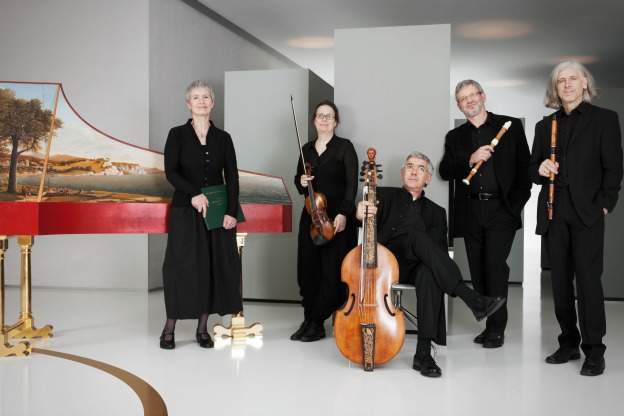
Famous Flutists
Marcel Moyse, Jean-Pierre Rampal, Sir James Galway – three famous names that probably sound familiar, especially if you happen to be a flute enthusiast. These three virtuoso flute players, one of whom is still living, have made indelible marks in the world of classical music as well as being notable pedagogues.
But here's another name to consider: Jacques Martin Hotteterre. Sound familiar?
Equally famous as Moyse, Rampal, or Galway, Hotteterre lived centuries before the other three, though, during his time, he may have been more well known by his nickname "Le Romain" or the Roman. A strange nickname, it seems, for a Paris man, who no less came from a large family of musicians on the permanent roster of the French king.
The Hotteterres
Not only were the Hotteterres prominent performers, they also had a thriving instrument building business, composed and published their own music, and taught others to play.
Jacques Martin,* the particular Hottetere in question, was a quintessential member of the family – he knew how to do it all and was very good at it. After all, he was a flûte de la chambre du roi, a flutist of the royal chamber, a much respected post.
Jacques Martin and Corelli
But back to that nickname... Le Romain, or "the Roman." Corelli in Rome was especially influential during the dawn of the high baroque.
Incidentally, Jacques Martin* landed a job in Rome as maestro di flauto to Marchese Ruspoli early in his career between 1698 and 1700.
Soon, "Italian-ness" became the thread that permeated Jacques Martin's* composition, of course with unmistakable French finesse. Think croque-monsieur topped with bruschetta instead of béchamel.
After his stint in Rome, Jacques Martin* mixed Italian flavors into his French style whenever he cooked up new music. It's only appropriate then that even after he returned to France, Jacques-Martin's* nickname, Le Romain, stuck with him the rest of his life.
"How to" series
As a pedagogue, Hotteterre was able to reach a large audience through his "how-to" series of books.
His 1707 Principes de la flûte gives rudimentary instructions on how to play the flute and also includes sections for recorder and oboe. The treatise laid the foundation for much of his work in the years to come and established Hotteterre's legitimacy as a teacher and composer.
Hotteterre's L'art de préluder from 1719 was likewise influential. Improvisation was an important part of 18th-century music making, and performers regularly improvised preludes during concerts. Hotteterre's 1719 treatise is full of examples and offers methodical instruction for the art of preluding.
Here's one example. The Prélude in G minor from the conclusion of Hotteterre's L'art de préluder models a wide array of possibility within one piece. Interestingly, the prelude is reminiscent of another g minor piece, the opening adagio of Bach's first solo violin sonata. It's interesting how the two works share similar pacing, mood, and melodic contour and is perhaps not such a surprising comparison, as both Bach and Hotteterre experimented in the Italian aesthetic of improvisatory preluding. But that's a topic for another day!
Camerata Köln
Camerata Köln's 2015 CPO release of the second volume of Hotteterre's complete chamber music explores the depth and breadth of the composer's imagination and his ability to assimilate Italian styles, creating in the end his own distinctive sound.
Hotteterre's competence as a composer is well matched on this recording by the members of Camerata Köln. Particularly noteworthy is the group's chosen orchestration in the pieces. Sometimes we hear two recorders together, sometimes two flutes, or sometimes flute and recorder paired, or flute and violin. The various combinations add yet another layer of interest for listeners.
* Incorrectly identified in the audio as Jean-Martin.









